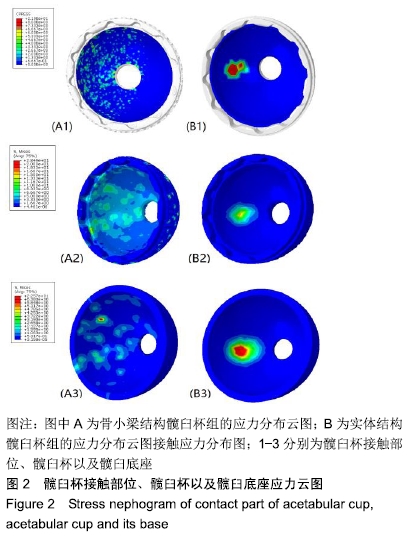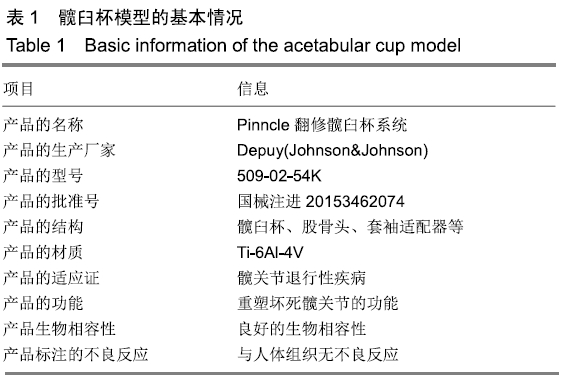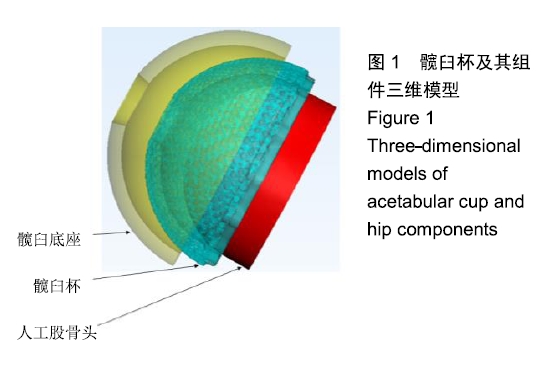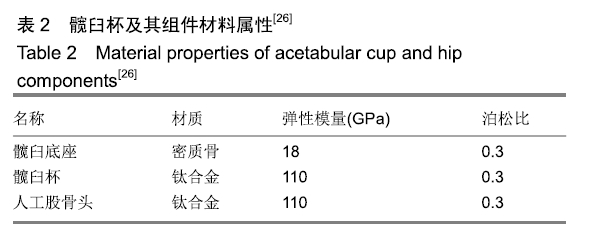[1] 王成焘,黄嘉华,戴魁戎.人工关节失效的统计分析及其在技术发展中的重要作用[J].医用生物力学,2012,27(1):1-6.
[2] 王昊森,郝智秀,林剑浩,等.基于有限元方法的全髋关节假体个体化选型分析[J].医用生物力学,2014,29(3):219-226.
[3] 宋新新. 人工髋关节假体置换的生物力学研究[D].天津:天津理工大学,2016.
[4] Canadian Joint Replacement Registry. CJRR annual report: Hip and knee replacements in Canada. Canadian Institute for Health Information, 2013.
[5] DAMM P, BENDER A, BERGMANN G. Postoperative changes in in vivo measured friction in total hip joint prosthesis during walking. PLoS One. 2015;10(3): e0120438.
[6] PAKHALIUK V, POLYAKOV A, KALININ M, et al. Improving the Finite Element Simulation of Wear of Total Hip Prosthesis’ Spherical Joint with the Polymeric Component. Procedia Eng. 2015;100:539-548.
[7] 马韧石.全髋关节置换术假体位置的生物力学研究及临床应用[D].长春:吉林大学,2012.
[8] HARRIS WH, MALONEY WJ. Hybrid total hip arthroplasty. Clin Orthop Relat Res. 1989;(249):21-29.
[9] 董汉青.骨小梁金属髋臼杯在全髋关节置换术中的应用及近期疗效[D].苏州:苏州大学,2016.
[10] 李冬松,刘建国,李叔强,等.非骨水泥型臼杯位置对髋臼内应力分布的影响及临床意义[J].生物医学工程学杂志, 2008,25(1): 97-100.
[11] KIM M, KADOWAKI T. High long-term survival of bulk femoral head autograft for acetabular reconstruction in cementless THA for developmental hip dysplasia. Clin Orthop Relat Res. 2010;468(6):1611-1620.
[12] 胡如印.3D打印多孔钛金属骨小梁髋臼杯的临床应用、体内基础研究与生物力学研究[D].南宁:广西医科大学,2018.
[13] MENEGHINI RM, FORD KS, MCCOLLOUGH CH, et al. Bone remodeling around porous metal cementless acetabular components. J Arthroplasty. 2010;25(5):741-747.
[14] 程文俊,勘武生,郑琼,等.3D打印钛合金骨小梁金属臼杯全髋关节置换术的短期疗效[J].中华骨科杂志,2014,34(8): 816-823.
[15] MELANCON D, BAGHERI ZS, JOHNSTON RB, et al. Mechanical characterization of structurally porous biomaterials built via additive manufacturing: experiments, predictive models, and design maps for load-bearing bone replacement implants. Acta Biomater. 2017;63:350-368.
[16] KUMAR A, NUNE KC, MISRA RDK. Design and biological functionality of a novel hybrid Ti-6Al-4V/hydrogel system for reconstruction of bone defects. J Tissue Eng Regen Med. 2018;12(4):1133-1144.
[17] NUNE KC, MISRA R, GAI X, et al. Surface nanotopography-induced favorable modulation of bioactivity and osteoconductive potential of anodized 3D printed Ti-6Al-4V alloy mesh structure. J Biomater Appl. 2018;32(8): 1032-1048.
[18] NUNE KC, MISRA RD, LI SJ, et al. The functional response of bioactive titania-modified three-dimensional Ti-6Al-4V mesh structure toward providing a favorable pathway for intercellular communication and osteoincorporation. J Biomed Mater Res A. 2016;104(10):2488-2501.
[19] KHANOKI SA, PASINI D. ASME ASME 2011 International Design Engineering Technical Conferences and Computers and Information in Engineering Conference - Washington, DC, USA (August 28–31, 2011). Volume 5: 37th Design Automation Conference, Parts A and B - Multiscale Design and Multiobjective Optimization of Orthopaedic Cellular Hip Implants. 2011:935-944.
[20] KHANOKI SA, PASINI D. The fatigue design of a bone preserving hip implant with functionally graded cellular material. J Med Devices Trans. 2013;7(2):2.
[21] SIMONEAU C, TERRIAULT P, JETTÉ B, et al. Development of a porous metallic femoral stem: Design, manufacturing, simulation and mechanical testing. Mater Des. 2017;114: 546-556.
[22] 霍莉峰,倪衡建.数字骨科应用与展望:更精确、个性、直观的未来前景[J].中国组织工程研究,2015,19(9):1457-1462.
[23] BAHRAMINASAB M, SAHARI BB, EDWARDS KL. Multi-objective design optimization of functionally graded material for the femoral component of a total knee replacement. Mater Des. 2014;53:159-173.
[24] JORGE JP, SIMÕES FM, PIRES EB, et al. Finite element simulations of a hip joint with femoroacetabular impingement. Comput Methods Biomech Biomed Engin. 2014;17(11): 1275-1284.
[25] 时亮,惠文斌,刘宗智,等.有限元法分析髋关节表面置换后髋关节的力学特点[J].中国组织工程研究,2017,21(27):4265-4270.
[26] 许杰,马若凡,蔡志清,等.成人髋臼发育不良伴骨关节炎行髋臼结构性植骨重建关节置换术的力学分析[J].中华关节外科杂志(电子版),2014,8(5):618-623.
[27] 曹金凤,石亦平. ABAQUS有限元分析常见问题解答[M].北京:机械工业出版社, 2009.
[28] Wolff J. Das Gesetz der Transformation der knochen. Berlin: Hirschwald,1982,11-13.
[29] 陈宇.基于激光三维打印的类骨小梁多孔钛种植体的设计及其体内成骨效应研究[D].重庆:重庆医科大学,2017.
[30] ARABNEJAD S, JOHNSTON B, TANZER M, et al. Fully porous 3D printed titanium femoral stem to reduce stress-shielding following total hip arthroplasty. J Orthop Res. 2017;35(8):1774-1783.
[31] BIEMOND JE, AQUARIUS R, VERDONSCHOT N, et al. Frictional and bone ingrowth properties of engineered surface topographies produced by electron beam technology. Arch Orthop Trauma Surg. 2011;131(5):711-718.
[32] OH IH, NOMURA N, MASAHASHI N, et al. Mechanical properties of porous titanium compacts prepared by powder sintering. Scr Mater. 2003;49(12):1197-1202.
[33] MIRCHESKI I, GRADIŠAR M. 3D finite element analysis of porous Ti-based alloy prostheses. Comput Methods Biomech Biomed Engin. 2016;19(14):1531-1540.
[34] RAHIMIZADEH A, NOURMOHAMMADI Z, ARABNEJAD S, et al. Porous architected biomaterial for a tibial-knee implant with minimum bone resorption and bone-implant interface micromotion. J Mech Behav Biomed Mater. 2018;78:465-479.
[35] MIHALKO WM, WHITESIDE LA. Stem pain after cementless revision total knee arthroplasty. J Surg Orthop Adv. 2015; 24(2):137-139.
[36] 杨庆铭.全髋关节置换术后的假体松动[J].中华关节外科杂志(电子版),2009,3(5):60-63.
[37] 陶铁瑛.髋关节置换术后假体松动40例临床分析[D].杭州:浙江大学,2009.
|





